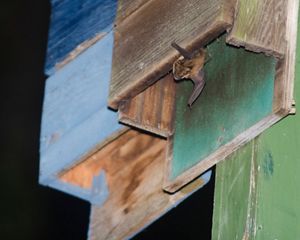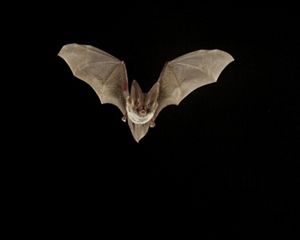
Bat Habitat Enhancement TNC partners and volunteers installing bat houses at Mcmahon Lake Preserve. © Mindy Kantola, TNC
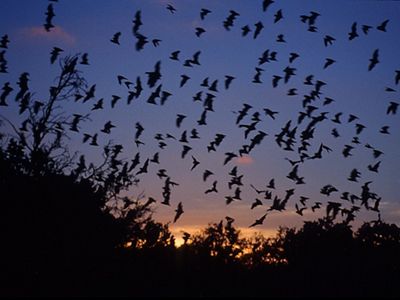
Why Bats Matter (and Why They’re Not Spooky)
When you think of October, bats might flutter into your imagination alongside cobwebs, pumpkins and haunted houses. While bats often get a bad rap in Halloween décor, the truth is far less frightening and far more fascinating.
Bats are unsung heroes of Michigan’s ecosystems. A single bat can eat thousands of insects in one night, including mosquitoes, crop pests and bugs that spread disease. By controlling insects naturally, bats reduce the need for pesticides, support farmers and help maintain ecosystem balance. Yet, despite their importance, bats face serious challenges, including habitat loss and white-nose syndrome, a deadly fungal disease. That is why The Nature Conservancy (TNC) is working to help Michigan's bats.
Help Protect Michigan's Biodiversity
You have the power to make a difference for the Great Lakes State and for our planet.
Support Our Work
Enrolling in the Bat Habitat Conservation Plan
This year, TNC is enrolling all Michigan forest reserves in the Department of Natural Resources’ Bat Habitat Conservation Plan (HCP). The plan guides landowners to adopt conservation measures during forestry activities such as timber harvests, road and trail construction, and prescribed fire. These measures are designed to minimize incidental harm to bats, including federally endangered species like the northern long-eared bat and the Indiana bat.
By participating, TNC is ensuring that our management decisions protect not only forests and waters but also the winged wildlife that depend on them. The plan is a proactive way to balance forestry and conservation across Michigan.

Conservation in Action: McMahon Lake Preserve
Our commitment goes beyond enrollment. At McMahon Lake Preserve, TNC worked with the Michigan Natural Features Inventory to confirm that much of the property provides suitable habitat for northern long-eared and Indiana bats. These findings shaped a volunteer project in partnership with Michigan United Conservation Clubs (MUCC) and the Iron River Girl Scouts where participants installed 12 new bat boxes in prime locations, which were assembled by the Girl Scout troops.
The bat boxes provide roosting spots in areas where natural tree cavities may be scarce, helping bats find shelter and safe places to raise their young. The project was a true community effort, with volunteers of all ages learning how even small steps can create big benefits for wildlife.
Quote: Mindy Kantola
Bats may fly under the radar for most people, but their role in nature is anything but small. Our crew’s work this year is helping ensure Michigan forests support these vital creatures for generations.
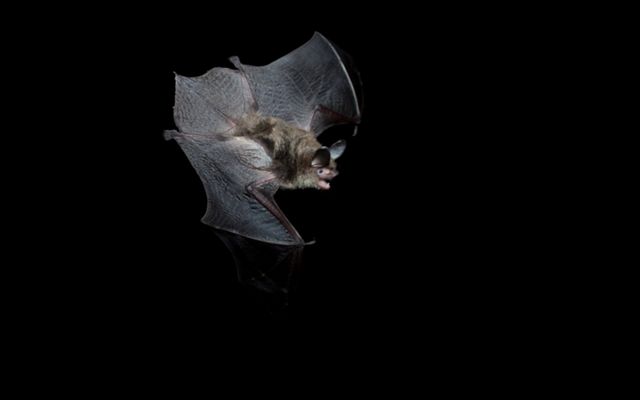
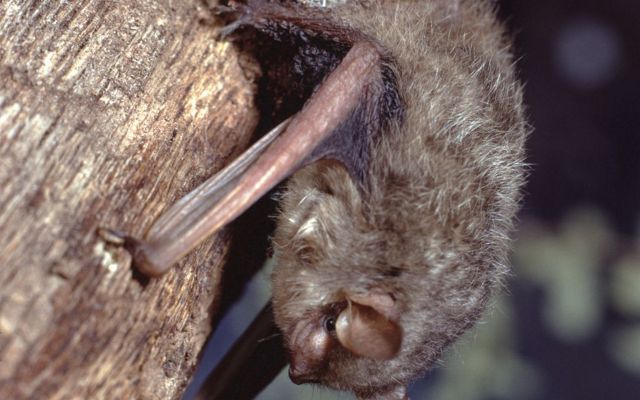
Meet Michigan’s Bats
Michigan is home to nine bat species, each with unique adaptations and important roles in the ecosystem:
- Little Brown Bat—Michigan’s most common bat. Small and agile, it thrives near water, where it feeds on aquatic insects. Colonies often roost in attics or under shingles in summer, then hibernate in caves or mines in winter.
- Big Brown Bat—Larger and easy to spot with its steady flight and wingspan over 12 inches. Found in both cities and rural areas, it eats beetles, flies and mosquitoes, often roosting in buildings or bridges.
- Northern Long-Eared Bat—Recognizable by its oversized ears, this federally threatened species roosts under bark or in tree hollows. It is highly vulnerable to white-nose syndrome.
- Indiana Bat—Federally endangered and rare in Michigan, limited mostly to the south. Prefers floodplain forests, where it roosts under loose bark.
- Red Bat—Striking reddish or orange fur that blends with autumn leaves. A solitary tree-roosting species that migrates south for winter.
- Hoary Bat—Michigan’s largest bat with a 15-inch wingspan and frosted fur. It is solitary, migratory and rarely seen by people.
- Silver-Haired Bat—Dark fur tipped with silver, often found near lakes and streams, and known for slow, low flights and solitary roosting habits.
- Tri-Colored Bat—One of the smallest bats in the state, with golden to reddish-brown fur. It hibernates in caves or mines and is often mistaken for a moth in flight.
- Evening Bat—Found mainly in southern Michigan. Similar to the little brown bat but with a slightly different ear shape. Colonies raise young in summer, usually producing two pups.
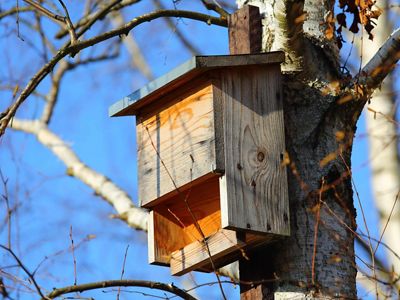
Installing a bat box provides shelter for Michigan's bats, giving them a safe place to roost, rest and raise young.
How You Can Help
Protecting bats is something anyone can do. You can install a bat house, plant night-blooming flowers that attract moths or support conservation groups like TNC that safeguard habitats statewide.
This Bat Appreciation Month, let’s celebrate bats not as spooky creatures but as fascinating neighbors that keep our nights a little less buggy and our ecosystems more resilient.

Looking for More Ways to Get Involved?
Sign up to receive monthly conservation news and updates from Michigan. Get a preview of Michigan’s Nature News email.
